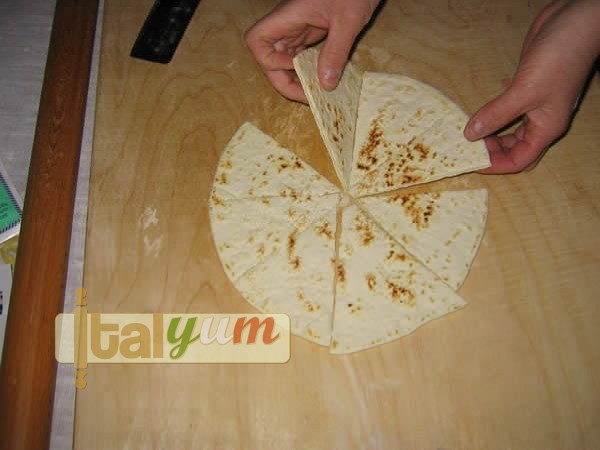
Piadina flatbread (Piadina romagnola)
The “Piadina flatbread” is probably the most famous food icon of Romagna, an area east of the city of Bologna that covers the provinces of Forlì-Cesena, Rimini and Ravenna. Traditional food (fish from the sea coast and meat from the hills), wine producers and good life style, make this area very attractive. I love it so much that if one day I have to go back to Italy I would choose to live there.Coming back to the Piadina, I have to say that it cannot be compared with pitta bread, fajitas, naan bread, etc.; piadina is only piadina! You can eat the piadina with a selection of italian cured meats (coppa, salame, mortadella, prosciutto crudo, pancetta, bresaola) or with different types of cheese as well as many other delicacies.
Clicking on equipment pictures takes you to Amazon where you can buy the items. We get a small revenue share of anything you buy which helps keep the site running.
Ingredients
- 1 Kilograms (2.2 lb) white flour (Italian “00” flour or equivalent)
- A heaped teaspoon of salt for seasoning
- 100 grams (4 oz) pork lard (available in most of the supermarkets)
- 15 grams (1/2 oz) Baking powder
Instructions
- Put the flour on a flat board.

- Make a well in the centre.
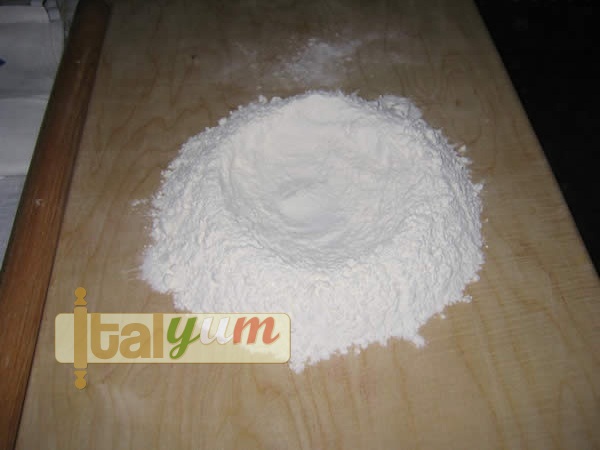
- Put the salt into the well.
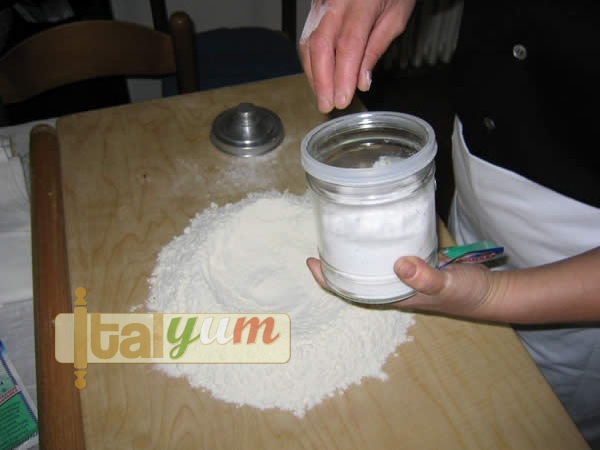
- Spread the baking powder onto the flour.

- Put all the lard (in Italy we call it “strutto”) into the well. If you store the lard in the freezer, be sure to take it from the freezer the night before.
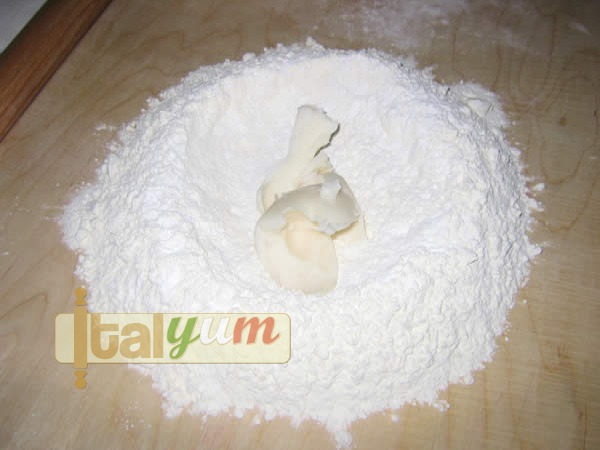
- Take some hot water (not boiling -you should be able to bath the little finger without pain!) and pour a very small quantity onto the lard and with one hand work the lard in order to melt it.
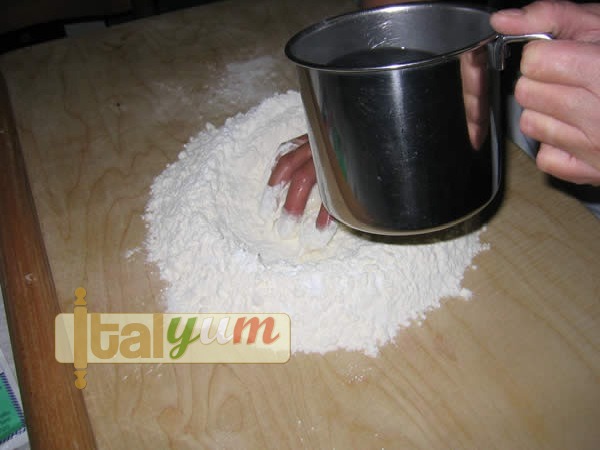
- Be sure that all the lard is melted. If you need extra hot water to melt the lard, add it – but just what you need.
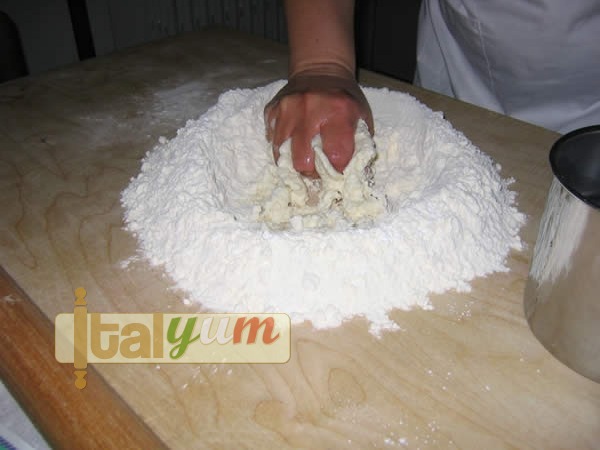
- Start working the dough. Do not use water unless you feel it is absolutely necessary to work in all the flour.
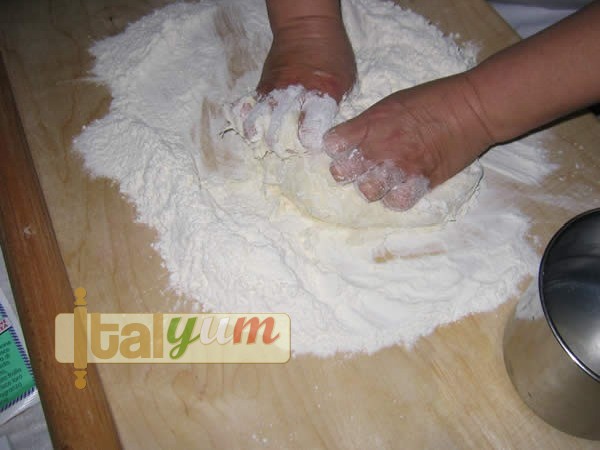
- The dough should be perfectly worked and externally should be smooth. The dough should not be too soft – but not too hard. Then, wrap the dough in a cloth (muslin) and put it in a plastic bag for half an hour to rest.
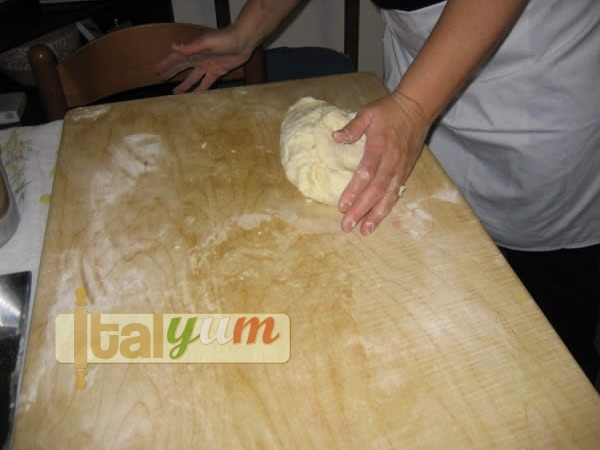
- After resting the dough, it should look smooth and white. Take a small ball of dough of about 150g (5 oz) and start to flatten it with a rolling-pin.
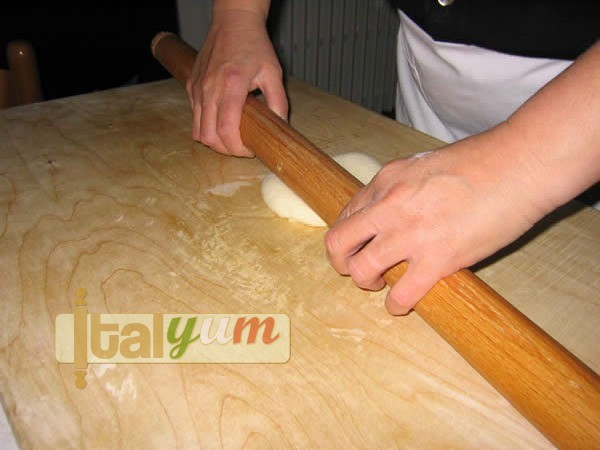
- Work the dough trying to turn the medallion clockwise when rolling, to ensure that all the sides are at the same thickness.
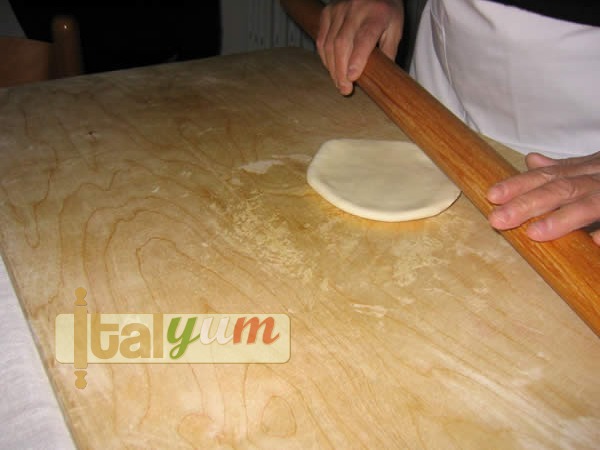
- The piadina is ready when it measures between 20-25cm (8"-10") diameter and 3 mm (1/8") thick. There is no rules about the diameter; it really depends on what kind of pan you have. Some piadinas are just 10 cm (4") in diameter. In our case with 1 kg (2.2 lb) of flour we made 7 piadina. Try and experiment!
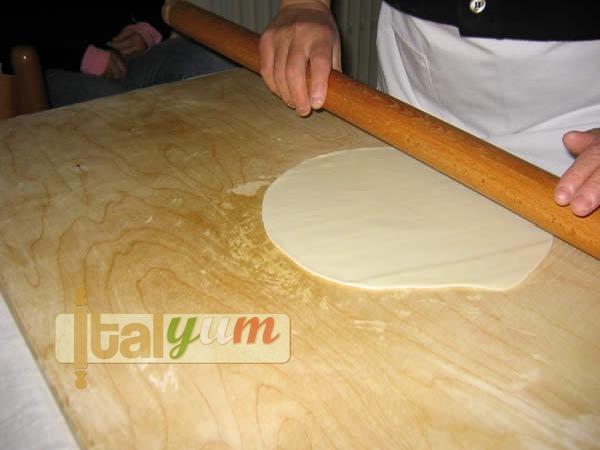
- Be sure that the surface is flat and smooth.

- Ready for cooking.
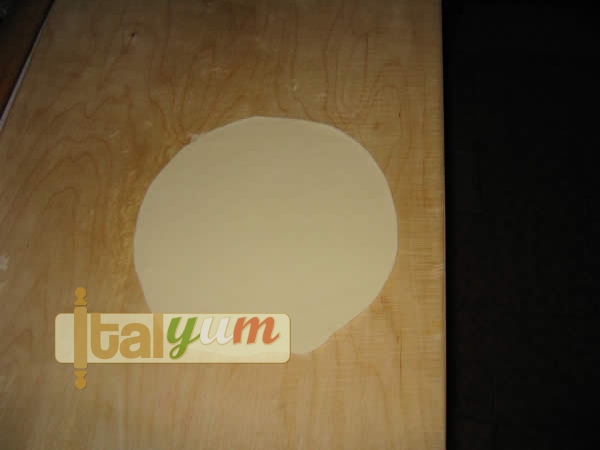
- This is the flat pan specifically designed for the piadina. Put the pan onto the cooker so that it becomes very hot.
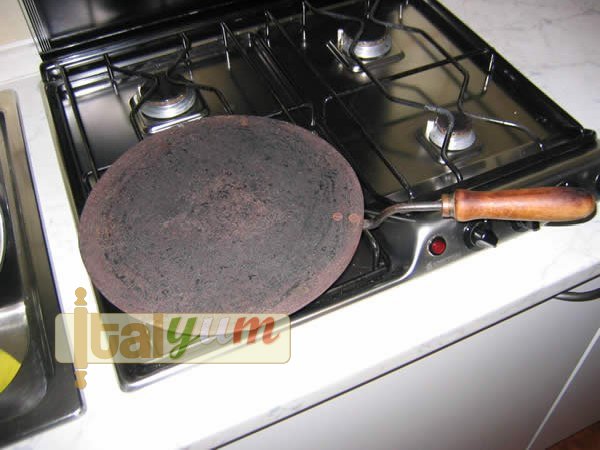
- Put the piadina onto the pan and start cooking it. At this stage the piadina may rise a bit or a few bubbles may form. Keep it flat or fork the bubble to ensure that the surface is flat.
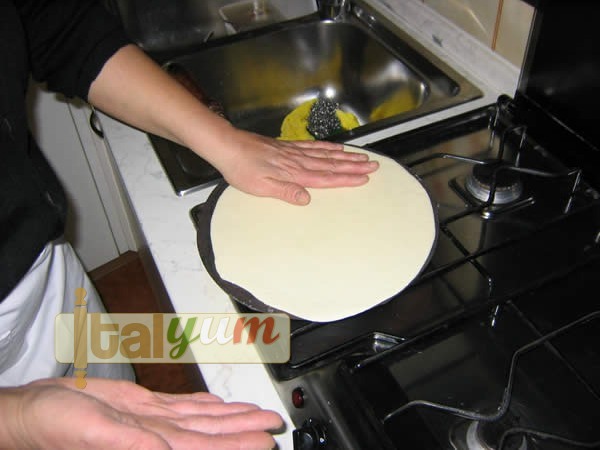
- After a minute or so check that the bottom surface has a kind of light brown colour (but not uniform) and then turn onto the other side.
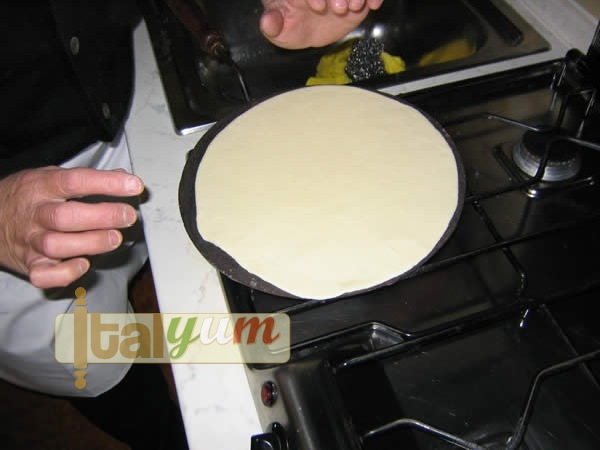
- Here we are cooking the second side until it is a light brown colour.

- The piadina is ready.
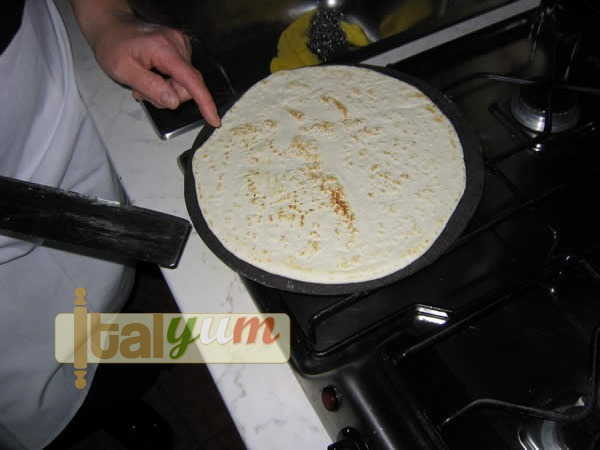
- Cut the piadina into slices.
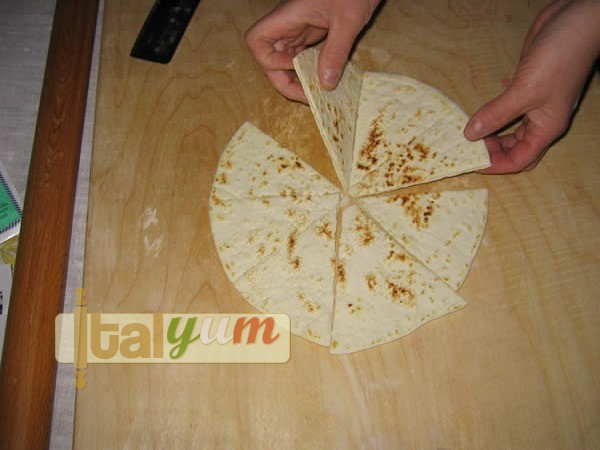
- Get some dry cured ham or coppa from the fridge (salame, gorgonzola cheese, mozzarella are all delicious).
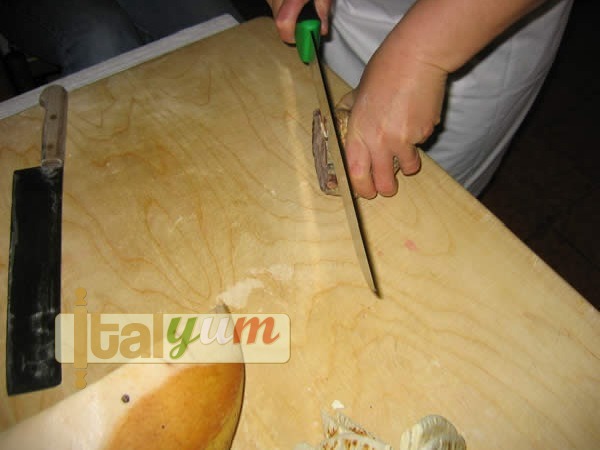
- Some slices of “good stuff”!In this case is “coppa” (the neck of the pork).
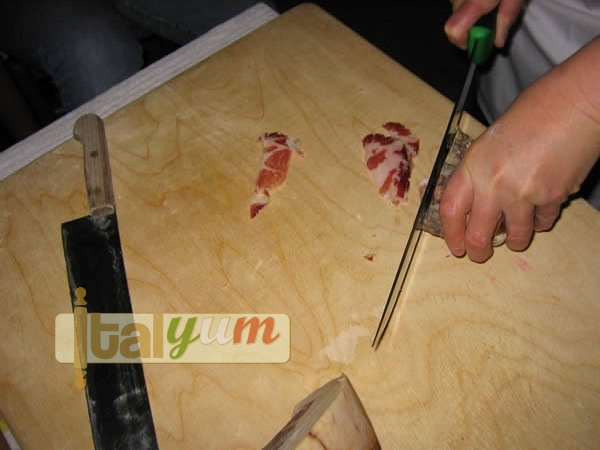
- Ready to eat. You can also sandwich the stuff with two piadina slices.Remember, a good glass of red wine is essential!

Nutrition
Calories: 650kcal
Tried this recipe?Let us know how it was!



